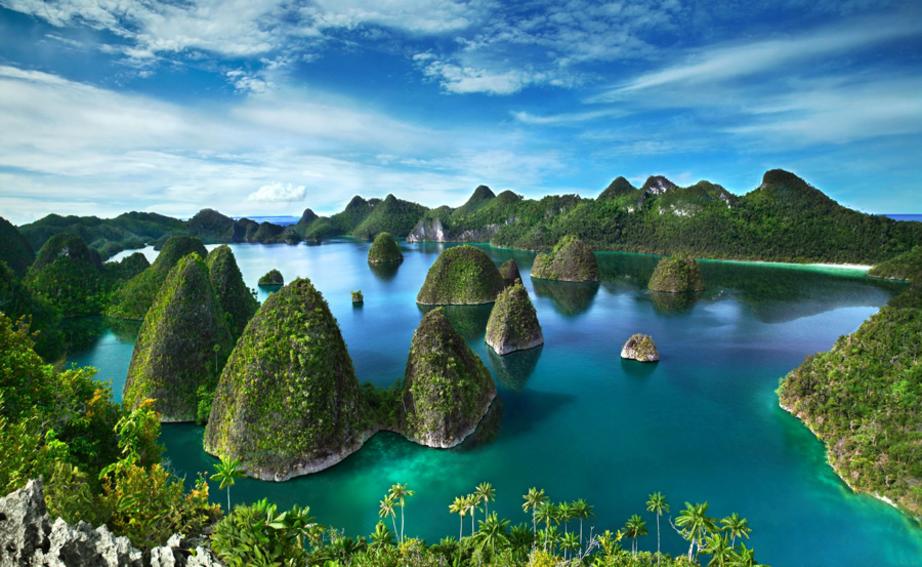Damage to Raja Ampat 12 times higher than previously thought
A cruise ship smashed into one of Indonesia’s best coral reefs
- Raja Ampat is home to one of the most spectacular coral reefs in the world.
- The cruise ship that hit the reef on March 4 damaged 18,882 square meters of coral reef, the Indonesian government said this week.
- A preliminary estimate had identified only 1,600 square meters of damaged reef.
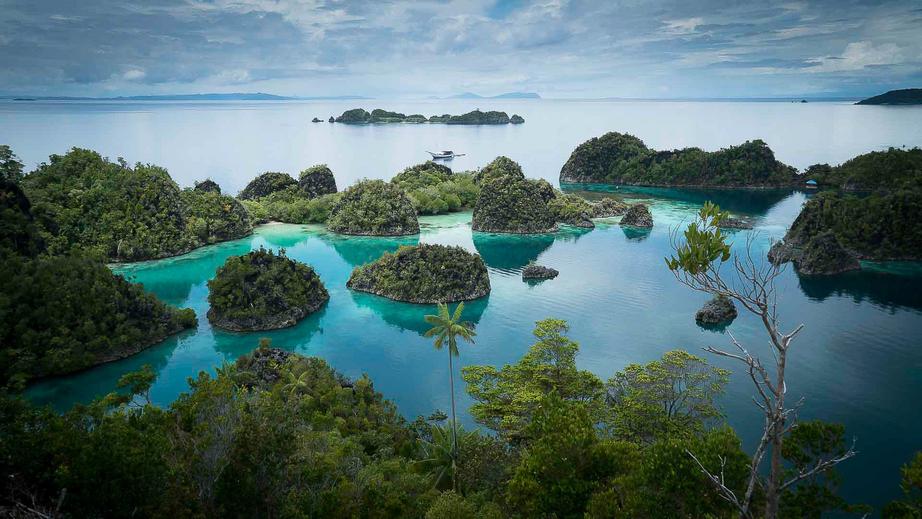
The extent of coral reef damage from the grounding of a Bahamian-flagged cruise ship at Raja Ampat earlier this month is about 3.5 times as big as an American football field — much greater than previously thought, the Indonesian government said this week.
On March 4, the 90-meter-long Caledonian Sky, owned by tour operator Noble Caledonia, ran aground at low tide on a shoal in West Papua province and damaged 18,882 square meters of coral reef in the Dampier Strait, according to an official statement released on Tuesday.
The ship had earlier that day taken 102 tourists on a bird-watching expedition, part of a 16-night journey from Papua New Guinea to the Philippines.
The damaged area is almost 12 times larger than a preliminary estimate had identified. The latest assessment is the result of a joint investigation by the Indonesian government and the London P&I Club, Noble Caledonia’s insurer.
“Both parties have agreed and signed off on the investigation result,” said Arif Havas, the deputy coordinating minister for maritime affairs.
More than 13,000 square meters of reef were totaled by the 4,290-tonne cruise ship, he said.
The boat further inflicted “medium damage” on 5,612 square meters of reef from sand whipping and coral debris caused by the ship’s movement. In an attempt to refloat it, a tugboat was requested to help it break free from the shallow area, which harmed the reef even worse.
“Coral with medium damage only have a survival rate of 50 percent,” Arif said, adding that the government would update its compensation assessment if the reef failed to recover.
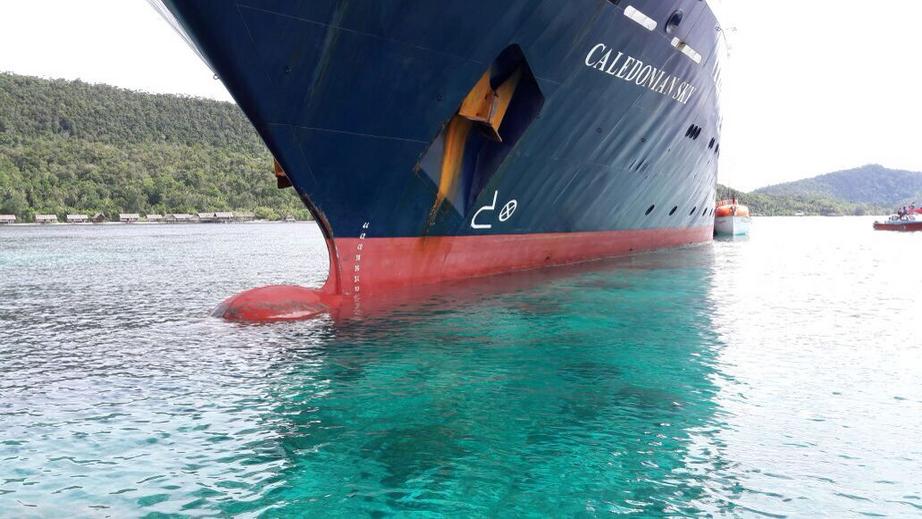
The Caledonian Sky after it ran aground at Raja Ampat. Photo courtesy of Stay Raja Ampat
President Joko Widodo’s administration has appointed a team led by the Ministry of Environment and Forestry to calculate the financial losses of the damaged coral reef.
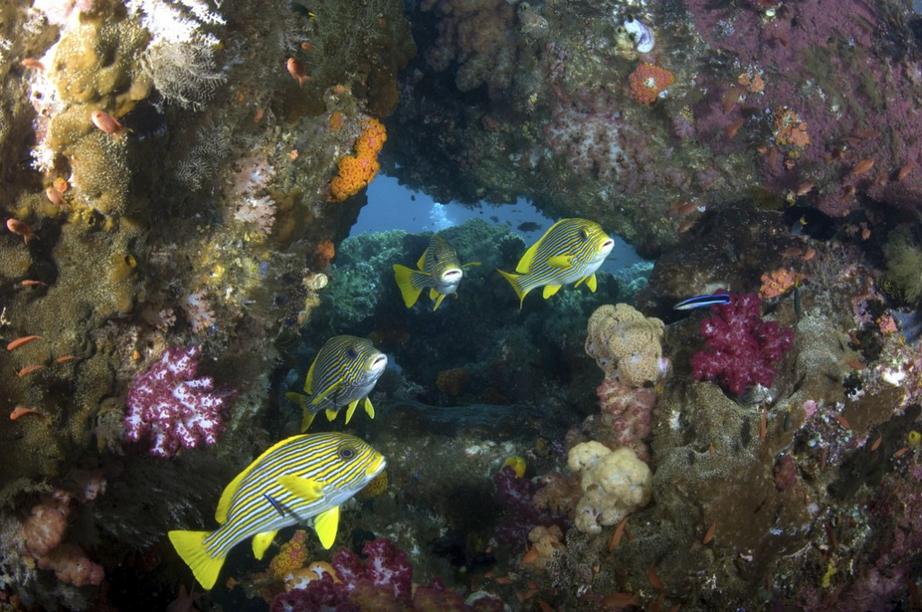 Photo by Sterling Zumbrunn for Conservation International
Photo by Sterling Zumbrunn for Conservation International
Ricardo Tapilatu, who led the preliminary evaluation team, said in an interview immediately after the disaster that the standard compensation rate was $200-$400 per square meter.
But due to Raja Ampat’s special biodiversity and its status as one of the world’s most popular dive sites, as well as the fact that the damage occurred in a national park, he added, the rate would be higher than normal.
Tapilatu’s initial survey also showed the destruction of the ecosystem’s structural habitat and the reduction or loss of diversity of eight coral genera. Conservation International, an NGO, reported in 2002 that Raja Ampat — which means “Four Kings” in Indonesian — was home to nearly 1,400 varieties of fish and 603 species of coral.
The area could take 100 years to recover, Tapilatu said.
Noble Caledonia, which is headquartered in London and was founded by a Swede, has apologized for the “unfortunate” incident and said it would cooperate with the Indonesian government “towards a fair and realistic settlement.”
Coordinating maritime minister Luhut Pandjaitan said his office would involve several foreign governments in the case, including those of the UK, Sweden and the Bahamas. On Mar. 17, he summoned British ambassador Moazzam Malik to his office in Jakarta to discuss the matter.
“I’m disappointed to learn about the damage to this coral reef in West Papua, as we are with any environmental incident that occurs in Indonesia or anywhere else in the world,” Malik said as quoted by news agency AFP.
“We hope the matter can be resolved quickly between the Indonesian authorities and the company that is responsible for this accident and was managing the ship.”
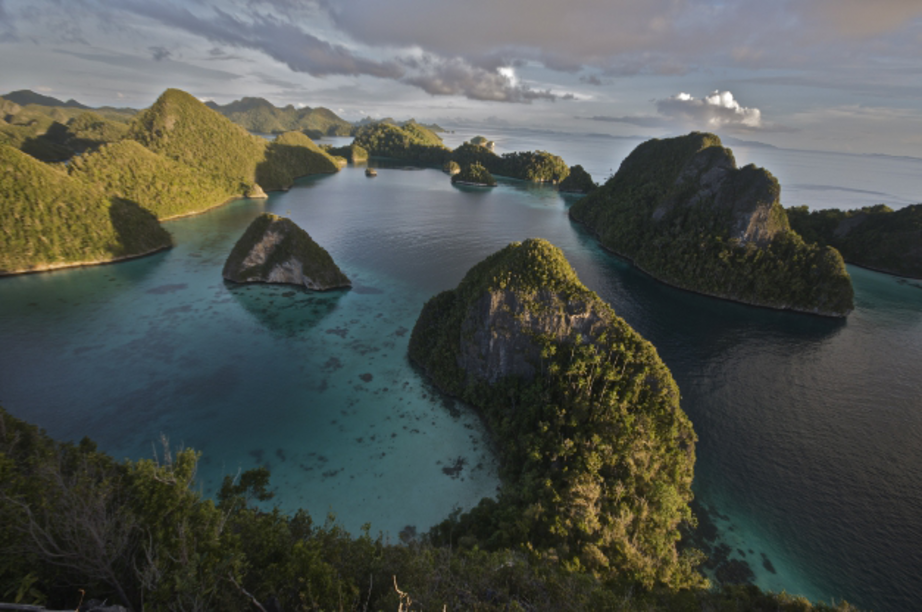
Raja Ampat, home to some of Indonesia’s best dive sites. Photo by Jonathan Chase/Wikimedia Commons
In the meantime, the Coordinating Ministry for Maritime Affairs is seeking for approval to upgrade Raja Ampat’s status to a Particularly Sensitive Sea Area, a designation of UN agency the International Maritime Organisation (IMO).
The status will earn Raja Ampat “special protection through action by IMO because of its significance for recognized ecological or socioeconomic or scientific reasons and which may be vulnerable to damage by international maritime activities.”
“We can learn from the underwater tourism in Australia’s Great Barrier Reef, where cruise ships can still enter sensitive sea areas,” said Oegroseno, the deputy minister. “However, there are clear boundaries to prevent such activities from damaging the marine ecosystem.”
The coordinating maritime ministry has also said Indonesia is mulling the revision of how many foreign cruise ships should be allowed to enter the archipelago country’s waters, as well as the size and type to be permitted.
“We want our marine potential to provide us a lot of benefits, both economically and ecologically,” Oegroseno said. “ We must be very clever at making the related policies.”

